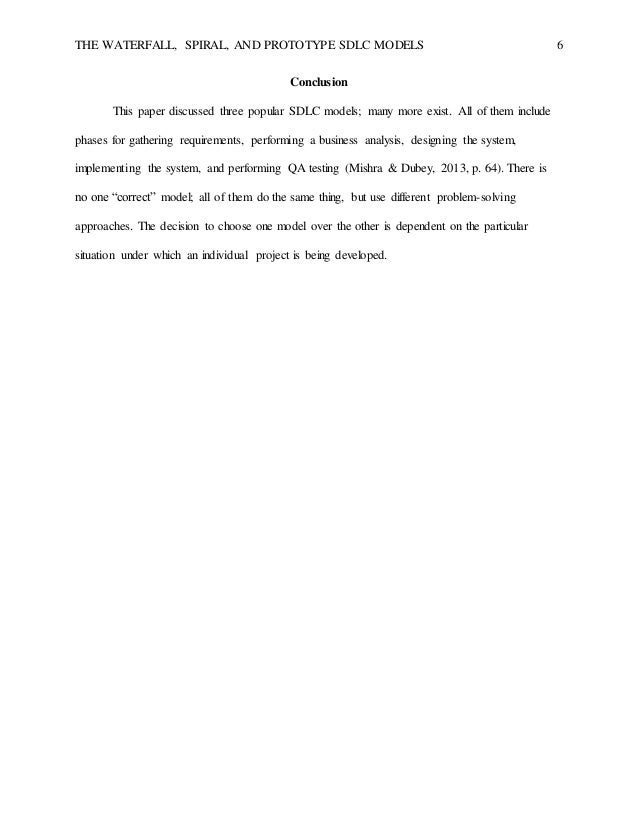
The goal of each iteration is to produce a working product. Cross-functional teams work on iterations of a product over a period of time, and this work is organized into a backlog that is prioritized based on business or customer value. Instead of in-depth planning at the beginning of the project, Agile methodologies are open to changing requirements over time and encourages constant feedback from the end users.
#PROTOTYPE VS WATERFALL MODEL SOFTWARE#
Manage Any Project Your Way with SmartsheetĪgile software development is based on an incremental, iterative approach.Differences and Similarities: Agile vs Kanban.Differences and Similarities: Waterfall vs Agile.How Do Kanban and Scrum Relate to Each Other?.Differences and Similarities: Scrum vs Kanban.Differences and Similarities Between Agile and Scrum.Core Practices and Principles of Kanban.How Waterfall Deals with Software Requirements.Using Agile for Projects Outside of Software.How Agile Addresses Software Requirements.
 Methodologies That Are Used to Implement Agile. WorkApps Package your entire business program or project into a WorkApp in minutes.
Methodologies That Are Used to Implement Agile. WorkApps Package your entire business program or project into a WorkApp in minutes.  Digital asset management Manage and distribute assets, and see how they perform. Resource management Find the best project team and forecast resourcing needs. Intelligent workflows Automate business processes across systems. Governance & administration Configure and manage global controls and settings. Streamlined business apps Build easy-to-navigate business apps in minutes. Data connections Synchronize data across critical business systems. Secure request management Streamline requests, process ticketing, and more. Process management at scale Deliver consistent projects and processes at scale. Content management Organize, manage, and review content production. Workflow automation Quickly automate repetitive tasks and processes. Team collaboration Connect everyone on one collaborative platform. Smartsheet platform Learn how the Smartsheet platform for dynamic work offers a robust set of capabilities to empower everyone to manage projects, automate workflows, and rapidly build solutions at scale. This is done through application of iterative processes to evolve a system most suited to the given circumstances. In the Evolutionary Model, the development engineering effort is made first to establish correct and precise requirement definitions and system scope, as agreed by all the users across the organization. Generally the phases occur in the same order as in the waterfall model, but they may be conducted in several cycles. Iterative enhancement model: This model has the same phases as the waterfall model, but with some restrictions. The spiral model focuses on identifying and eliminating high-risk problems by careful process design.Ĥ. The spiral model is intended for large, expensive and complicated projects. It provides the potential for rapid development of incremental versions of the software. It is an evolutionary software process model combining the iterative nature of prototyping with the controlled and systematic aspects of a linear sequential model. Spiral model: The spiral model was originally proposed by "Boehm". The requirements can be communicated more clearly and completely.ģ. In the prototype model the requirements can be set earlier and the more reliable customer sees the results very quickly.
Digital asset management Manage and distribute assets, and see how they perform. Resource management Find the best project team and forecast resourcing needs. Intelligent workflows Automate business processes across systems. Governance & administration Configure and manage global controls and settings. Streamlined business apps Build easy-to-navigate business apps in minutes. Data connections Synchronize data across critical business systems. Secure request management Streamline requests, process ticketing, and more. Process management at scale Deliver consistent projects and processes at scale. Content management Organize, manage, and review content production. Workflow automation Quickly automate repetitive tasks and processes. Team collaboration Connect everyone on one collaborative platform. Smartsheet platform Learn how the Smartsheet platform for dynamic work offers a robust set of capabilities to empower everyone to manage projects, automate workflows, and rapidly build solutions at scale. This is done through application of iterative processes to evolve a system most suited to the given circumstances. In the Evolutionary Model, the development engineering effort is made first to establish correct and precise requirement definitions and system scope, as agreed by all the users across the organization. Generally the phases occur in the same order as in the waterfall model, but they may be conducted in several cycles. Iterative enhancement model: This model has the same phases as the waterfall model, but with some restrictions. The spiral model focuses on identifying and eliminating high-risk problems by careful process design.Ĥ. The spiral model is intended for large, expensive and complicated projects. It provides the potential for rapid development of incremental versions of the software. It is an evolutionary software process model combining the iterative nature of prototyping with the controlled and systematic aspects of a linear sequential model. Spiral model: The spiral model was originally proposed by "Boehm". The requirements can be communicated more clearly and completely.ģ. In the prototype model the requirements can be set earlier and the more reliable customer sees the results very quickly. 
The customer evaluates the prototype to refine the requirements. Prototype model: In the prototype model the initial requirements gathering is done.
When it is possible to produce a stable design.Ģ. One phase must be complete before moving onto the next phase. The main drawback of the waterfall model is the difficulty of accommodating change after the process is underway.







 0 kommentar(er)
0 kommentar(er)
